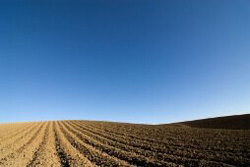
When it comes to advantages and disadvantages of subsurface agricultural drainage systems there is one very clear point for each argument; Advantage of Subsurface Agricultural Drainage Systems – There is no interruption of the field surface, wastage of land taken up for drainage systems or interference with farm machinery – okay, maybe that’s three advantages if you want to look at it that way.
Disadvantage of Subsurface Agricultural Drainage Systems –They are a much more pricey option than the relatively easy surface drainage methods. They also don’t work too well in heavy, largely impermeable clay type soils – okay, so maybe that’s two disadvantages.
Let’s take a look at the different types of subsurface agricultural drainage systems in more detail;
- Tile drains – first of all you’ve got to dig a narrow trench which needs to be at least 75 cm deep to prevent the tiles being crushed by heavy farming machinery above the surface. Then place a layer of tiles at the bottom of the ditch – porous type tiles definitely work the best and cover with soil. The water is moved thanks to gravity between the tiles.
- Rubble drains – work on pretty much the same principle as the tile drains using gravel or coarse stones. You’ve got to dig a narrow drain (V shaped works best) then fill them up with rubble and rough stones before covering with a layer of soil. This type of drain needs to be at least 90 cm deep.
- Mole drains – are useful in heavy clay type soils and need the use of a moling machine – usually 10 or 15 cm diameter a minimum of 75 cm beneath the surface of the land. These are commonly used in European agriculture.
- Drainage pumps – are often used in the United States as a means of reclaiming land at the bottom of rivers, lakes, irrigated lands, peat lands etc.
 English
English Français
Français Deutsch
Deutsch español
español Italiano
Italiano 日本語
日本語 Eλληνικά
Eλληνικά русский
русский

